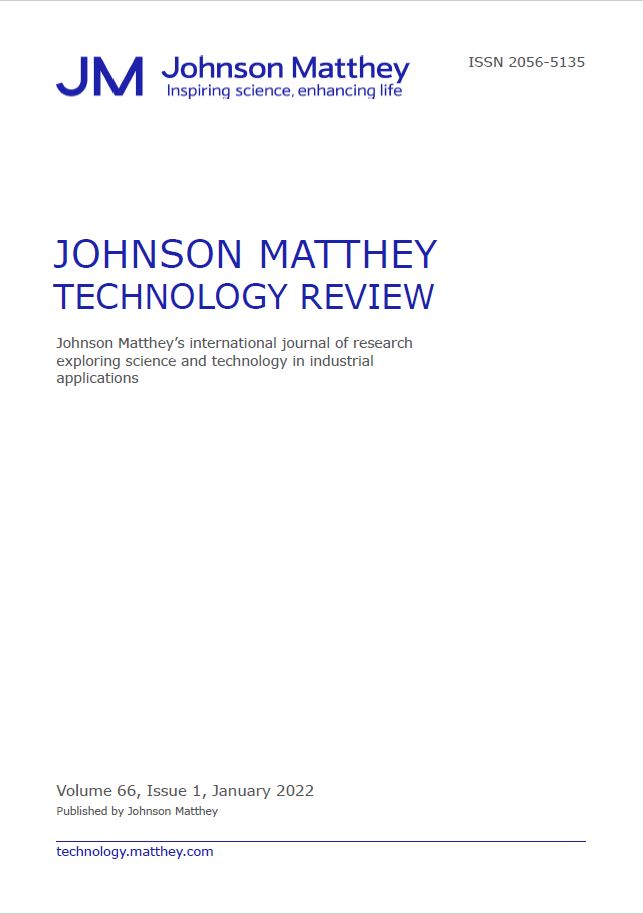-
oa Advanced Catalytic Technologies for Compressed Natural Gas–Gasoline Fuelled Engines
Challenges in methane abatement
- Source: Johnson Matthey Technology Review, Volume 67, Issue 2, Apr 2023, p. 171 - 185
-
- 17 Nov 2021
- 25 Oct 2022
- 31 Oct 2022
Abstract
The main challenges of compressed natural gas (CNG) engine fuelling in terms of methane abatement in the aftertreatment system are addressed in this study using differently loaded platinum group metal (pgm) catalysts. A dual-fuel injection strategy of methane-gasoline was implemented where methane gas was port-injected into the intake in stoichiometric conditions at levels corresponding to 20% and 40% energy density replacement of gasoline fuel. High, medium and low loaded palladium-rhodium catalysts were used and compared to study the effect of pgm loading on the catalyst light-off activity for methane. Results indicate that increasing the palladium loading led to significantly earlier light-off temperatures achieved at relatively lower temperatures of 340°C, 350°C and 395°C respectively. However, the benefit diminishes above palladium loading >142.5 g ft–3. The study has also demonstrated that ammonia is formed over the CNG catalyst due to steam-reforming reactions from the increased levels of methane in the exhaust with dual-fuelling. Hence aftertreatment technologies such as selective catalytic reduction (SCR) should be adopted to remove them. This further highlights the need to regulate the harmful ammonia emissions from future passenger cars fuelled with CNG. In addition, the benefits of the dual-fuel system in terms of lower engine output carbon dioxide, non-methane hydrocarbon (NMHC) and particulate matter (PM) emissions compared to the gasoline direct injection (GDI) mode alone are presented.


